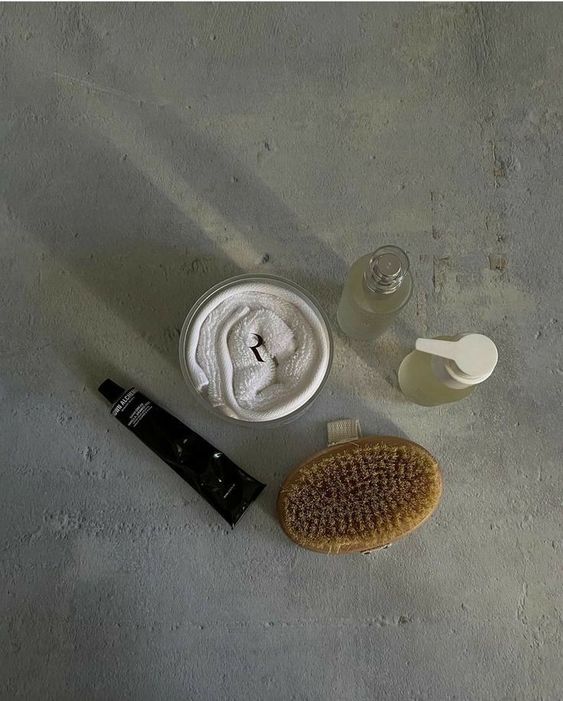
We are consistently on the run in today's world and stress seems to creep up on us in expected ways throughout our days. Let's take a look at what stress actually is, the different types of stress, how it affects our skin, and what we can do to eliminate any detrimental effects of stress on our skin and overall experiences in life.
The Concise and Definitive Definition of Stress
[1][2]Stress is the body-mind response generated when we are exposed to internal or external pressures. This response causes changes in practically every system, thus affecting how we feel and act. Dry mouth, faster speech, dilated pupils, fidgeting, shortness of breath, slow digestion, worsening of negative emotions (if already present), palpitations and sweating are just a few examples of stress-induced symptoms.
When we hear the word stress, we immediately link it to something negative. The truth is that humans would have never been able to thrive on Earth without stress. It is an adaptation mechanism, and we know that survival is completely dependent on adaptation. The problem starts when stress becomes chronic, as it was originally designed to be generated during extreme circumstances (accidents, earthquakes, robberies, sitting an exam, etc.). If stress turns into an ongoing situation, it will directly contribute to the development of psychological and physiological ailments; hence, it will severely impact our wellbeing and quality of life. Let's take a deeper look at the different types of stress:
Reciprocal Consequence of Stress on Your Body
[3]- Eustress: This is a short duration, invigorating and positive stress that keeps us motivated. It helps us cope with life's challenges and improves our performance. We always perceive this type of stress as something we are well-equipped to handle. Examples: climbing a mountain, job interview, getting married, the birth of a child, etc.
- Distress: This is an energy-robbing, negative stress with either a short or long duration. It is highly demotivating, unpleasant and significantly impairs our performance. Distress is seen as something that goes beyond our capabilities and often results in disease. Examples: poverty, job demands, lawsuits, sickness, etc.
Types of Stress Intensity & Their Reciprocal Effects
[4][5]-
Acute stress
: This is the most prevalent type of stress, and it is caused by past and future obligations/pressures. This tension produced, also known as fight or flight response, is usually temporary: being stuck in a traffic jam, having a hectic day, preparing for a lecture, etc. We go back to normal when the stressful event is over. Every single person has to deal with acute stress, and our list of to-do-things might not go as planned. -
Episodic acute stress
: This is an amped up form of acute stress and is way more detrimental. We enter into its dangerous zone when the acute stress becomes a “daily business” (instead of occurring occasionally). For example, when we “juggle too many balls at the same time” we never get relief from our responsibilities and always feel angry, worried and under a lot of pressure. -
Chronic stress
: This is the so-called long-term stress and happens when acute stress or a traumatic experience is not solved, is neglected or is poorly managed. We literally learn to live with chronic stress, and we think there is simply no way out of it. This type of stress is extremely debilitating and can lead to a wide array of health problems like heart disease, sleep & digestive disorders, hypertension, high blood pressure, anxiety, depression and even burn-out.
Stress VS Skin: The Shocking & Insightful Aftermath
[6]External and internal stimuli, stressors, are detected by the skin´s receptors. These signals are transmitted to the spinal cord and subsequently to the brain. Once there, the brain will generate a response via the hypothalamic-pituitary-adrenal (HPA) axis and influence the way the skin reacts to them. The more potent the stressor, the more inflammatory the reaction produced by the skin.
A stressed HPA will cause an increase of the α-melanocyte stimulating hormone (α-MSH), and adrenocorticotropin (ACTH) hormones. The latter is responsible for the release of cortisone by the adrenal glands, which results in a heightened immune response and stimulation of the sebaceous glands.
Adrenaline and noradrenaline are secreted when the sympathetic nervous system is activated by stress, this will cause constriction of blood vessels and reduce the supply of nutrients and oxygen within the skin. An elevated concentration of these hormones will trigger the production of inflammatory cytokines (small proteins). Adrenaline will affect the proliferation and differentiation of keratinocytes, keratin-producing cells in the epidermis, hence altering the renewal process of the outermost layer of the skin. Fibroblasts functions, the cells that produce collagen, elastin, and hyaluronic acid, will be inhibited too. And the melanogenesis process (melanin synthesis) will experience a spike.
The pro-inflammatory neuropeptide, Substance P (SP) is secreted as a response to stress, as well as the prolactin hormone and mast cells. The second one exerts a direct effect on adipose (fat) tissue, keratinocytes, and the sebaceous glands. Mast cells, on the other hand, are part of the skin's immune system and release pro-inflammatory compounds.
To sum this up, a long chain of reactions happens within the skin when exposed to stressful situations that will result in the formation of obnoxious free radicals and the development/exacerbation of inflammatory conditions. This phenomenon can be observed on the skin as follows:
- Acne
- Psoriasis
- Dryness
- Cellulite
- Atopic dermatitis
- Hyperpigmentations
- Poor wound healing
- Premature aging
- Eye puffiness
- Dark under-eye circles
- Accumulation of fatty tissue
- Earlier development of skin tumors
- Very pronounced wrinkles and loss of elasticity
- Weak microbiome that lead to impurities, increased sensitivity, and inflammation
- Depletion of the skin barrier components that leads to transepidermal water loss
Dealing with stress seems impossible as we have to deal with so much of it on a day-to-day basis. But hope is not lost because there are certain measures that you can take to reduce it and learn to better cope with it. Here are our stress-proof recommendations:
- Go early to bed and try to secure 7-8 hours of sleep
- Exercise during at least 30 minutes, 3-4 times per week
- Treat yourself to a massage 2-4 times per month
- Meditate on a daily basis
- Practice breathing and mindfulness exercises
- Take yoga, Tai Chi or Qigong (or any other healing discipline) classes
- Quit smoking
- Eat foods that are chock-full of prebiotics (artichoke, banana, chicory, dandelion, onion, garlic, leeks) and probiotics (kefir, kombucha, miso, yogurt, tempeh, sauerkraut)
- Minimize, if possible eliminate, your intake of stimulating/inflammatory substances such as alcohol, coffee, sugar, gluten, dairy, hydrogenated fats and processed foods
- Maximize your consumption of antioxidant-loaded and omegas-rich foods (almonds, berries, salmon, green leafy veggies, nuts and seeds , algae/seaweed, etc.
- Incorporate adaptogens into your diet like ashwagandha, holy basil, astragalus, ginseng, licorice, schisandra, turmeric and mushrooms
- Replenish the transepidermal water loss caused by stress with ingredients that help to lock in moisture (plant-based hyaluronic acid, squalane and cold-pressed vegetable oils).
- Topically counteract the effects of skin stress by applying toxic-free, minimalistic, and super antioxidant skincare formulas
- When stress gets out of control psychotherapy sessions will be absolutely necessary. It is better to ask for help on time than later regret the damage that can´t be undone.
Now that you know more about the ins and outs of stress and how it affects your health, specifically your skin, make sure to follow our tips on how to better cope with it and eventually live a happier life! To learn more about all matters related to your skin, make sure to follow us on Instagram, Facebook, Linkedin, and Pinterest.
References
[1] https://dictionary.apa.org/stress
[2] https://dictionary.apa.org/chronic-stress
[3] https://www.mindfulnessmuse.com/stress-reduction/eustress-vs-distress
[4] https://saylordotorg.github.io/text_human-relations/s07-01-types-of-stress.html
[5] https://healthcare.utah.edu/healthfeed/postings/2021/01/stress-skin.php
[6] https://www.ncbi.nlm.nih.gov/pmc/articles/PMC4082169/#R121




